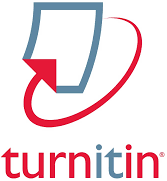Koi Fish (Cyprinus rubrofuscus Lacepede, 1803) Breeding Techniques at the Center for Freshwater Aquaculture (BBPBAT) Sukabumi, West Java
DOI:
https://doi.org/10.29303/jfh.v4i3.5780Keywords:
Breeding Techniques, Center for Freshwater Aquaculture (BBPBAT) Sukabumi, Hatching Rate, Koi Fish, Survival RateAbstract
One of the economically valuable aspects of fisheries development is ornamental fish farming. Koi farming has advantages as the fish can easily adapt to various environments. The breeding activities included broodstock maintenance, spawning and nursery tank preparation, broodstock selection, hormone injection, egg hatching, larva care, nursery stages, and harvesting. This research is intended to help the author learn and understand proper koi fish breeding techniques at the Center for Freshwater Aquaculture (BBPBAT) in Sukabumi, West Java. The data collected during this research activity includes both primary and secondary data. Primary data is obtained directly without intermediaries, resulting in raw data. Secondary data, on the other hand, is gathered through intermediaries or indirectly, and is sourced from library reports and information from governmental institutions. In the koi fish breeding activities carried out, it was observed that the koi fish had a fecundity rate of 71,400 eggs, an FR (Fertilization Rate) of 92%, an HR (Hatching Rate) of 97%, an SR (Survival Rate) in Nursery Phase I of 45%, and in Nursery Phase II of 74%.
Downloads
Published
Issue
Section
License
1. The copyright of this journal belongs to the Editorial Board, based on the author's consent, while the moral rights of the publication belong to the author(s).
2. The formal legal aspect of journal accessibility refers to the same Creative Common Attribution + Noncommercial + ShareAlike (CC BY-NC-SA), implying that publication can be used for non-commercial purposes in its original form.
3. Every publication (printed/electronic) is open access for educational, research and library purposes. In addition to the objectives stated above, the editorial board is not responsible for copyright infringement















